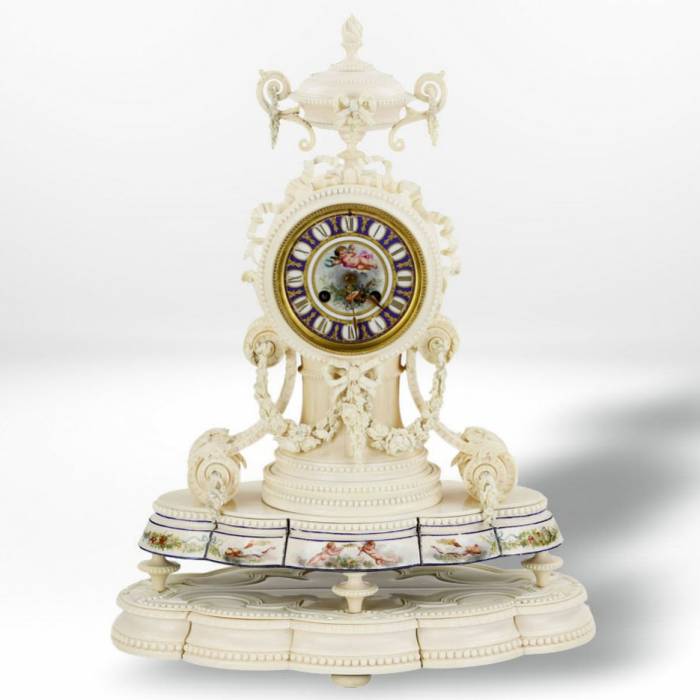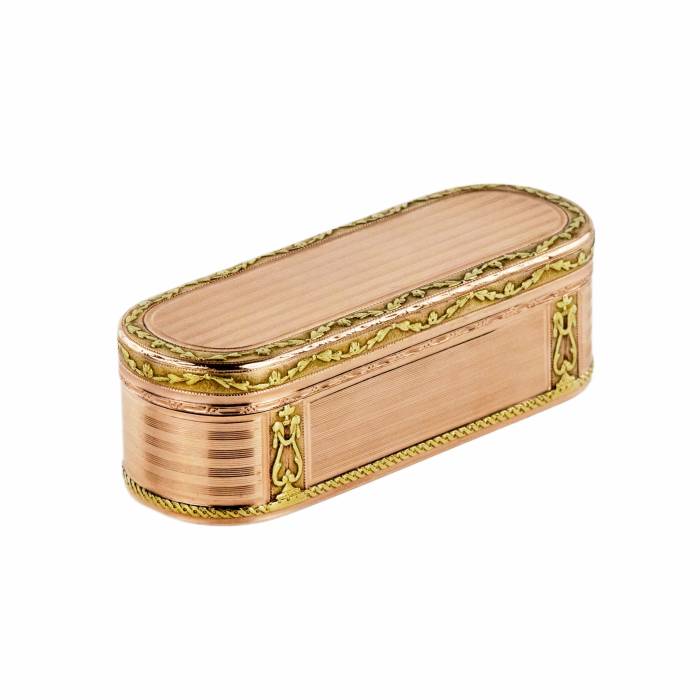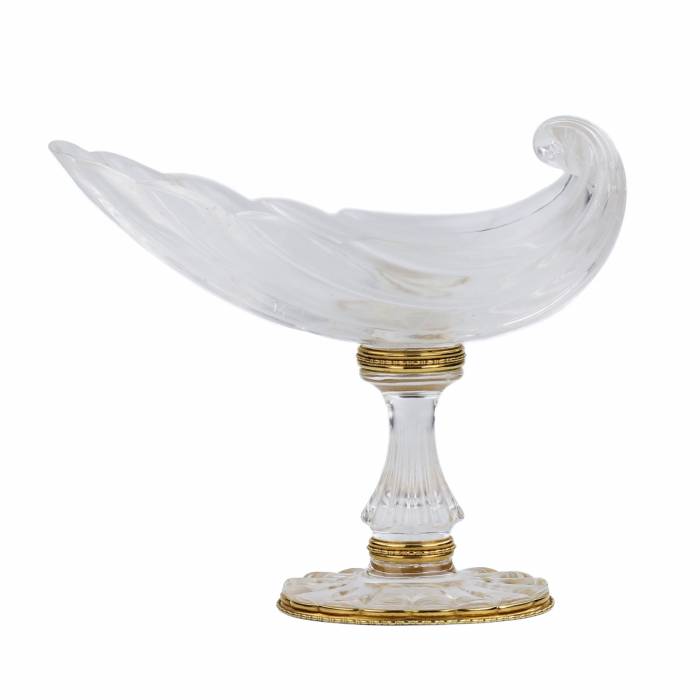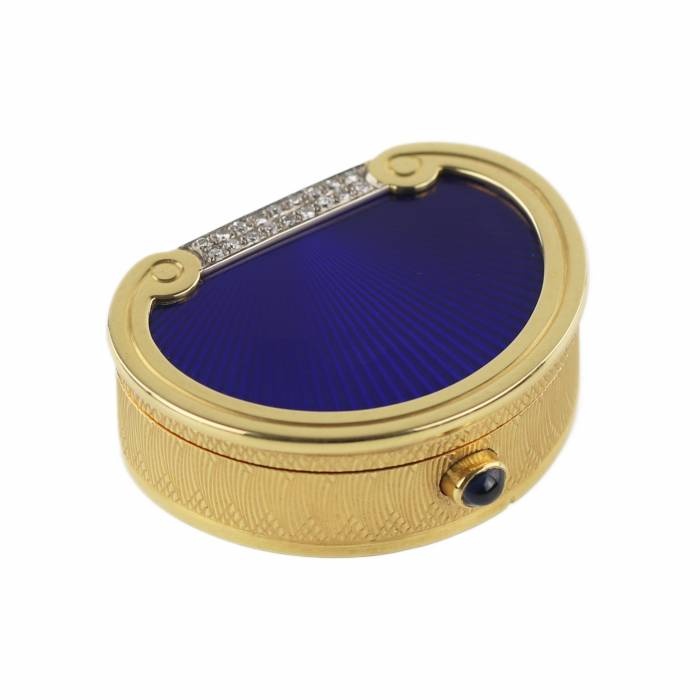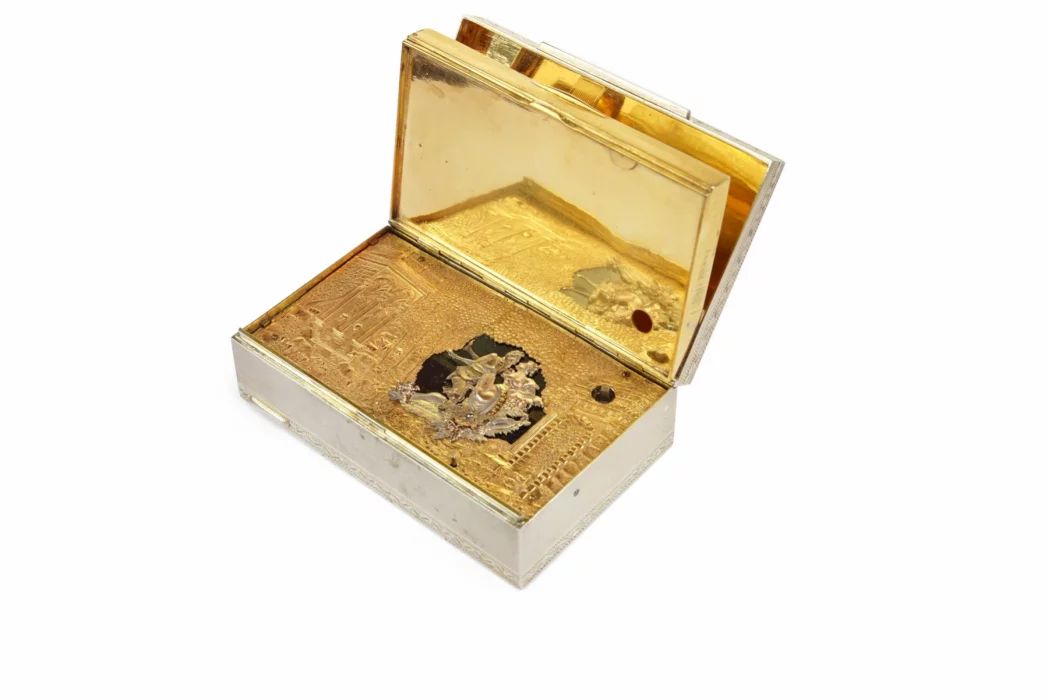
AntiqonART consultant will contact you within one business day after receiving your request.














At Antiqon ART, we build trust and value your choice. Every purchase of art and antiques with us is an investment backed by our expertise, reputation, and a 100% authenticity guarantee.
Discover how the value of similar works has evolved over the past 10 years. Art is not only beauty — it's an investment.
Antiqon ART offers free packaging, insurance, and delivery for most items purchased through the company. Exceptions include large and oversized items that require specialized packing and shipping.
The body is made of 88 silver standard, set on three elegant sculpted legs, and covered with ruby guilloché enamel over a wavy background. The upper part features an opalescent white enamel dial, protected by a faceted glass, inscribed in Russian with weather conditions: “Storm”, “Rain”, “Change”, “Clear”, “Very”. The whole is crowned by a raised silver laurel wreath in classical Empire style.
Hallmarks: Makers mark “FABERGÉ” ;Workmasters mark “ВА” for Viktor Aarne ; St Petersburg assay office mark (1899–1904), with inspector Yakov Lyapunov’s initials ; Number “88” indicating high silver purityDimensions:— Height: 6.3 cm— Base diameter: 11.5 cm— Top diameter: 8.5 cmWeight: 665 gProvenance: Commissioned in the workshop of Viktor Aarne for the House of Fabergé; belongs to the extremely rare category of silver barometers, some of which were presented on behalf of the Imperial Cabinet.
Barometers are exceptionally rare among Fabergé creations: only eight silver examples are known to exist, made by order of the Cabinet of His Imperial Majesty, two of which were awarded as the highest state honour. These items were distinguished not only by their refined aesthetics but also by their symbolic significance, reflecting the high status of the recipient and the exceptional nature of the occasion.
Carl Fabergé, celebrated as the Imperial Court Jeweller, developed a distinctive artistic language where enamel, silver, and utilitarian forms embodied prestige and refined taste. Master Viktor Aarne, one of Fabergé’s foremost workmasters, led his own workshop from 1888, specialising in silver and coloured enamel. His name appears on many items intended for the upper echelons of the empire — from card cases to desk accessories.
The Empire style in which this barometer is executed became an aesthetic code of Imperial power in Russia. In Fabergé’s silver and enamel, it gained a new celebratory tone. The laurel frieze, faceted glass, and deep ruby enamel combine neoclassicism with Petersburg decorative opulence.
Such pieces are preserved today in the Hermitage, the Wartski Collection in Switzerland, the Fabergé Museum in Baden-Baden, and leading private collections. They reflect not only the grandeur of the era but also the unparalleled craftsmanship that made the Fabergé name a synonym for luxury and perfection.
Excellent condition: the mechanism is in working order; enamel is intact; glass is undamaged; the silver surface is clean and lustrous. Hallmarks are clear.
The condition report is provided for informational purposes only.
It is not comprehensive and may not reflect all defects, restorations, alterations, or adaptations, as Antiqon does not perform professional conservation-level assessments. The information is based on a qualified, yet subjective, evaluation by our specialists.Before purchasing, we recommend consultation with an independent expert.Please also consult our Terms and conditions and Glossary A-Z, which contain important information on lot characteristics and sale conditions.

Thank you for your request!
Our consultant will contact you soon.

AntiqonART consultant will contact you within one business day after receiving your request.
Thank you for your request!
Our consultant will contact you soon.

AntiqonART consultant will contact you within one business day after receiving your request.









